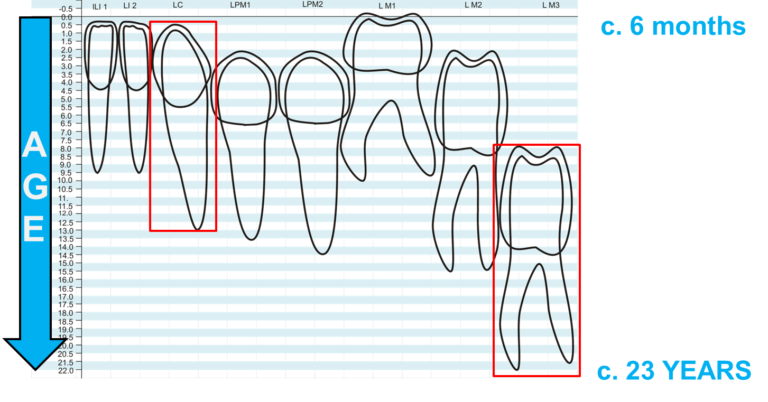Home / History / Archaeology / Archaeology and the Battle of Dunbar 1650: From the Scottish Battlefield to the New World / Isotopes: nutrition and stress
This article is from the free online
Archaeology and the Battle of Dunbar 1650: From the Scottish Battlefield to the New World


Reach your personal and professional goals
Unlock access to hundreds of expert online courses and degrees from top universities and educators to gain accredited qualifications and professional CV-building certificates.
Join over 18 million learners to launch, switch or build upon your career, all at your own pace, across a wide range of topic areas.

 The development of the permanent lower dentition against age; the permanent canine and third molar teeth are outlined in red © Julia Beaumont and Janet Montgomery
The development of the permanent lower dentition against age; the permanent canine and third molar teeth are outlined in red © Julia Beaumont and Janet Montgomery
 Skeleton 6: Dentine collagen carbon and nitrogen isotope ratio profiles against approximate age © Julia Beaumont and Janet Montgomery
Skeleton 6: Dentine collagen carbon and nitrogen isotope ratio profiles against approximate age © Julia Beaumont and Janet Montgomery
 Skeleton 12: Dentine collagen carbon and nitrogen isotope ratio profiles against approximate age © Julia Beaumont and Janet Montgomery
Skeleton 12: Dentine collagen carbon and nitrogen isotope ratio profiles against approximate age © Julia Beaumont and Janet Montgomery
 Skeleton 23: Dentine collagen carbon and nitrogen isotope ratio profiles against approximate age © Julia Beaumont and Janet Montgomery
Skeleton 23: Dentine collagen carbon and nitrogen isotope ratio profiles against approximate age © Julia Beaumont and Janet Montgomery






